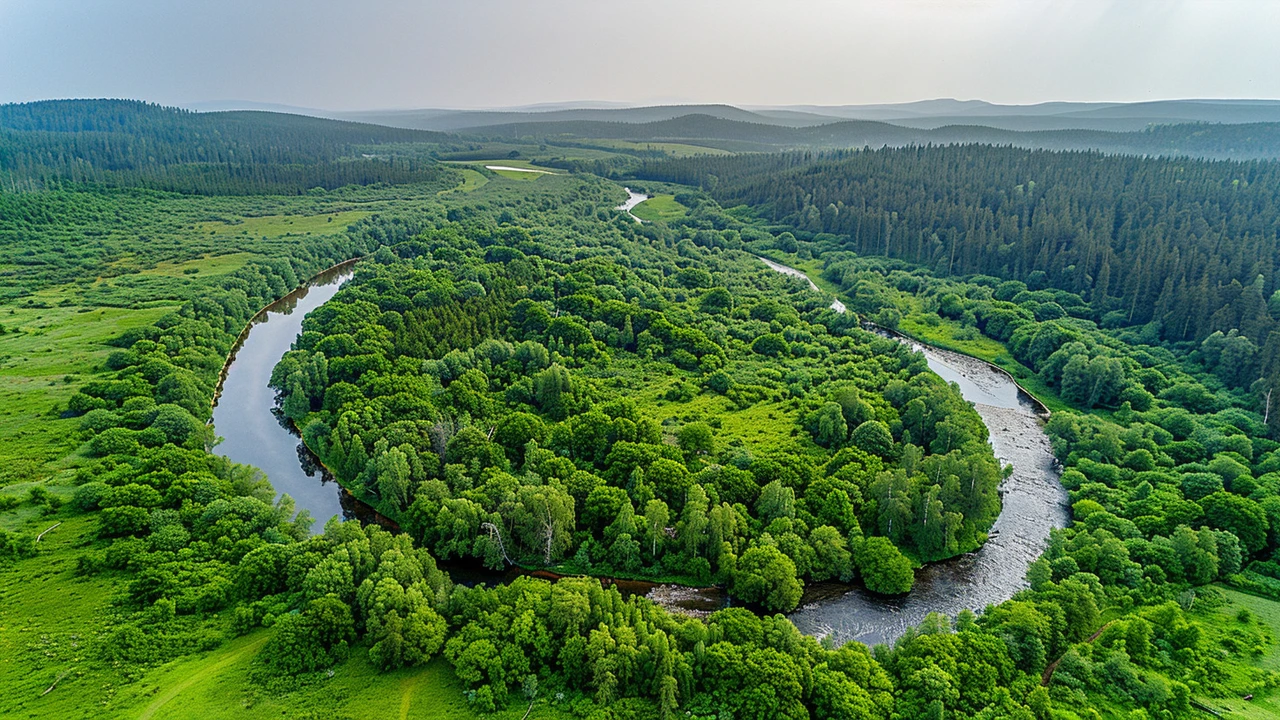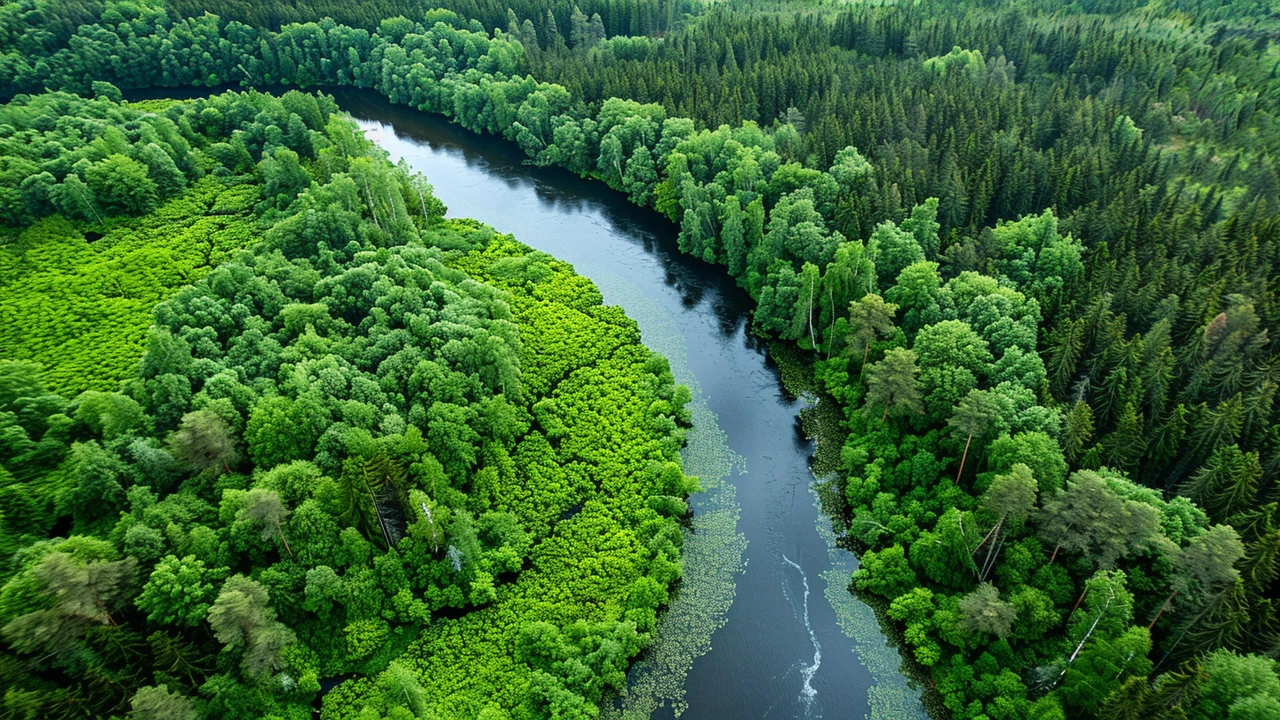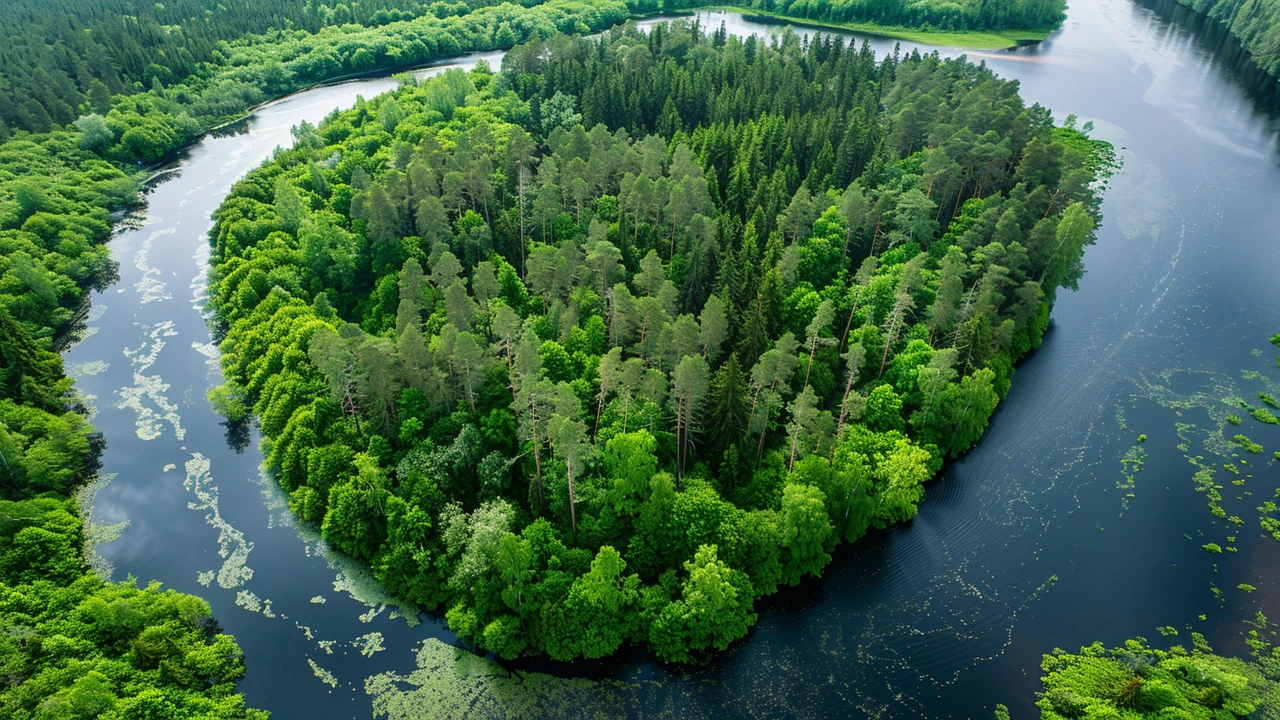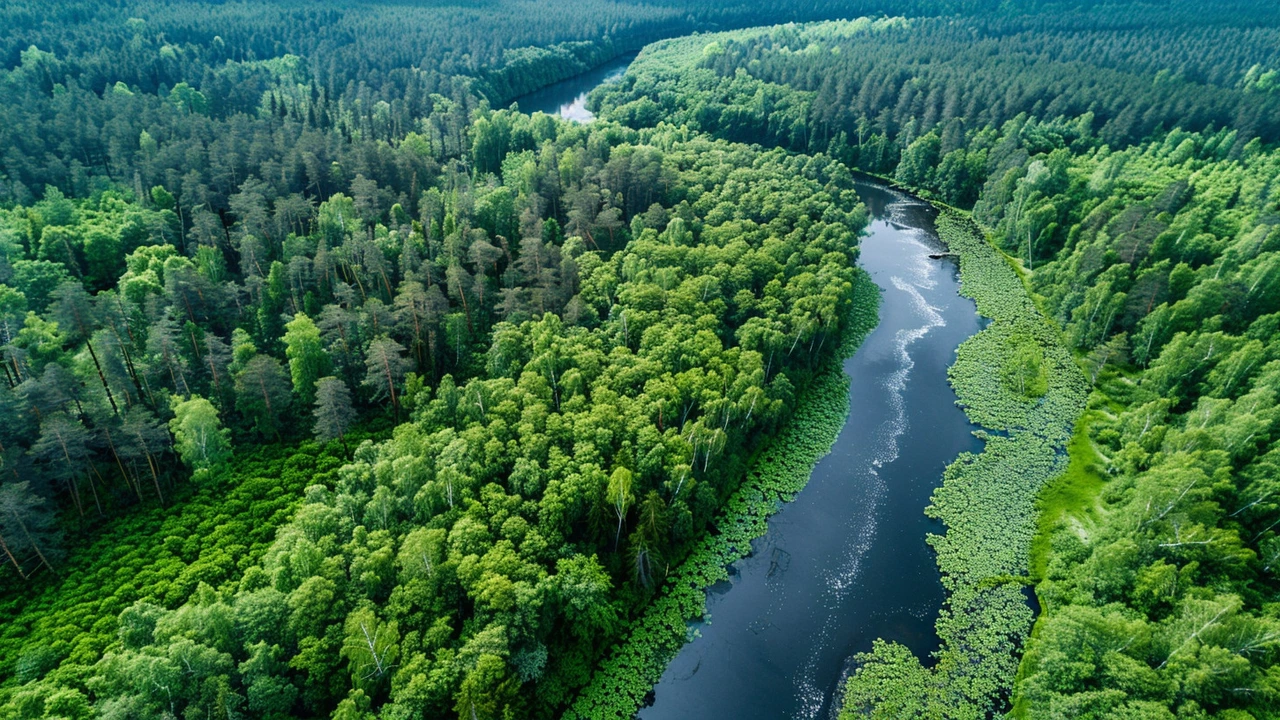World Environment Day 2024: Advocating for Land Restoration to Secure Our Future
Marking the calendar on June 5th, World Environment Day shines a spotlight on an issue that is as critical as it is widespread—land degradation. This year's theme focuses on land restoration, a topic that resonates deeply amidst current environmental crises. According to statistics, 40% of the Earth's land is affected by degradation, which impacts half of humanity. This is more than a call for awareness; it is a clarion call for action from every corner of the world. Land degradation poses a threat to food security, water supply, and the overall balance of nature. It's a crisis that requires immediate attention and systematic efforts to reverse its damaging effects.
The United Nations has launched the Decade on Ecosystem Restoration (2021-2030), a ten-year plan that underscores the urgency of these efforts. Dubbed 'Generation Restoration,' this initiative aims to protect and revive ecosystems on a global scale. The importance of land restoration cannot be overstated. It offers an opportunity to build a better future where people and nature coexist in harmony. The benefits extend beyond environmental healing, encompassing economic opportunities, enhanced biodiversity, and significant strides in mitigating climate change. Every action counts, and the collective efforts of individuals and communities can contribute to a sustainable future.
The Scope of Land Degradation
The enormity of land degradation is staggering. Estimates indicate that nearly 2 billion hectares of land globally are affected. This land, if rejuvenated, could provide more food and water, improve livelihoods, and enhance natural ecosystems. The degradation of land is often the result of deforestation, unsustainable agricultural practices, and industrial activities. Urban expansion and infrastructure development further exacerbate the problem, leading to loss of fertile soil and natural habitats. If these trends continue, the consequences will be dire, not just environmentally but also economically and socially.
The land degradation crisis threatens the very fabric of human existence. Food production systems are adversely affected, leading to reduced agricultural output and higher instances of food insecurity. Water supplies dwindle, affecting both communities and wildlife. The balance of nature teeters, resulting in the loss of biodiversity and the collapse of ecosystems. All of these factors contribute to a cycle of poverty and environmental collapse. The need for a coordinated global response has never been more urgent.
The economic implications of land degradation are profound. Globally, it is estimated that the loss of ecosystem services due to land degradation costs approximately 10% of the annual global gross product. This includes the loss of agricultural productivity, higher costs for water purification, and increased flood risks. In developing countries, the impact is more severe. Communities rely heavily on natural resources for their livelihoods, and any degradation directly affects their economic stability. Addressing the issue is not just an environmental necessity but an economic imperative as well.

UN Decade on Ecosystem Restoration: A Decade of Hope
The UN Decade on Ecosystem Restoration is a beacon of hope. It brings together a diverse array of partners, including governments, NGOs, businesses, and local communities. Together, they aim to halt the degradation of ecosystems and restore them to health. This decade-long effort focuses on various ecosystems, including forests, grasslands, wetlands, and coastal areas. Each of these ecosystems plays a crucial role in maintaining the health of our planet.
'Generation Restoration,' the campaign's moniker, emphasizes the role of today's youth in leading the charge. The involvement of young people is crucial as they bring energy, innovation, and a sense of urgency. Educational programs and community-driven projects are essential components of the campaign. These initiatives are designed to raise awareness and inspire grassroots action. The goal is to create a ripple effect that encourages sustainable practices and fosters a deeper connection with the natural world.
Land restoration efforts are diverse and multifaceted. They include reforesting degraded areas, adopting sustainable agricultural practices, and preventing further deforestation. Key strategies involve soil conservation techniques, water management practices, and the protection of native wildlife. Community-driven initiatives are particularly effective as they leverage local knowledge and engage people in the restoration process. By working together, communities can restore degraded lands and create sustainable livelihoods.
Economic and Environmental Benefits
Land restoration offers immense economic benefits. Healthy ecosystems provide services such as clean water, fertile soil, and air purification. These services are essential for human health and well-being. Restoring degraded land can also boost local economies by creating jobs in agriculture, forestry, and conservation. Rehabilitating land for agriculture improves food security, increases income for farmers, and drives economic growth in rural areas.
The environmental benefits are equally significant. Restored ecosystems enhance biodiversity, support wildlife, and help mitigate climate change. Forests, for example, act as carbon sinks, absorbing carbon dioxide from the atmosphere. Wetlands filter pollutants from water, improving water quality and reducing flood risks. Grasslands and savannas support a range of plant and animal species, promoting biodiversity. These ecosystems also act as buffers against extreme weather events, reducing the impact of floods and droughts.
Mitigating climate change is a critical aspect of land restoration. Healthy ecosystems sequester carbon, reducing greenhouse gas emissions. Reforestation projects and sustainable land management practices can offset a significant portion of global emissions. Trees and plants absorb carbon dioxide as they grow, storing it in biomass and soil. By restoring degraded lands, we can enhance the planet's capacity to store carbon and combat climate change.

Individual Actions: Small Steps, Big Impact
Individual actions play a significant role in land restoration. Every small step contributes to a larger movement. Simple practices like reducing water waste, supporting sustainable agriculture, and conserving energy can make a difference. Planting trees, maintaining gardens, and using eco-friendly products are ways individuals can contribute to the environment. Supporting local businesses that practice sustainability also helps promote eco-friendly practices.
Community engagement is vital. Local initiatives can mobilize people to take action in their own neighborhoods. Community gardens, tree planting events, and clean-up drives are excellent ways to involve people in restoration efforts. These activities not only contribute to environmental health but also foster a sense of community and shared responsibility. Schools and educational institutions can play a pivotal role by incorporating environmental education into curricula. Teaching children about the importance of ecosystems and sustainable practices ensures that future generations are equipped to continue these efforts.
The use of technology and innovation is another powerful tool in land restoration. Remote sensing and satellite imagery can monitor changes in land use and degradation. Drones can assist in planting trees and monitoring restoration projects. Digital platforms can raise awareness and connect people with resources and information. Innovative solutions can enhance the efficiency and effectiveness of restoration efforts, making them more impactful.
The Role of Policy and Governance
Government policies and regulations are critical in driving land restoration efforts. Policies that promote sustainable land use and protect natural resources are essential. Incentives for practices such as agroforestry, conservation agriculture, and reforestation can encourage landowners and farmers to adopt sustainable methods. Effective governance ensures that restoration efforts are coordinated and aligned with broader environmental goals.
International cooperation is key. Global initiatives, such as the UN Decade on Ecosystem Restoration, require collaboration among countries. Sharing knowledge, resources, and best practices can enhance the effectiveness of local and regional efforts. International agreements, like the Paris Agreement, provide frameworks for addressing climate change and land degradation collectively. Financial support from international organizations and donor countries is also vital in funding restoration projects, especially in developing regions where resources are limited.

Celebrating Milestones and Looking Forward
This year marks the 30th anniversary of the UN Convention to Combat Desertification (UNCCD), a significant milestone in the fight against land degradation. The UNCCD has played a crucial role in raising awareness and mobilizing action to combat desertification and promote sustainable land management. The upcoming 16th Conference of the Parties (COP16) in Riyadh, Saudi Arabia, will serve as a platform to assess progress, share experiences, and chart the path forward. It is an opportunity for stakeholders to renew their commitments and enhance their efforts to restore degraded lands.
As we celebrate World Environment Day 2024, it is imperative to recognize that the journey towards land restoration is a collective endeavor. Every action, no matter how small, contributes to the larger goal of creating a sustainable future. The words of UN Secretary-General António Guterres resonate as a powerful reminder: 'To restore our land is to restore our future.' Let us join hands and commit to the mission of 'Generation Restoration,' ensuring that the legacy we leave for future generations is one of health, prosperity, and harmony with nature.

19 Comments
Ankush Gawale
June 7 2024
Just saw a farmer in my village using mulch and crop rotation for the first time last month. Small change, but the soil’s already darker and softer. This stuff works if we just stop waiting for someone else to fix it.
रमेश कुमार सिंह
June 8 2024
Land isn’t just dirt-it’s memory. It holds the footsteps of ancestors, the whispers of monsoons, the roots of stories we’ve forgotten. When we degrade it, we don’t just lose topsoil-we lose our collective soul. Restoration isn’t about planting trees, it’s about remembering how to listen to the earth again.
Krishna A
June 9 2024
Yeah right, land restoration. Next they’ll tell us to hug trees to fix inflation. This is just greenwashing with extra steps.
Jaya Savannah
June 10 2024
so like… we’re supposed to believe that planting trees in a desert will magically make it rain? 🤔🌍 #blessed
Sandhya Agrawal
June 11 2024
They’re hiding something. The UN doesn’t care about land. They care about control. Who funds these projects? Who owns the data from the satellites? I’ve seen the patterns. This isn’t restoration-it’s surveillance with soil.
Vikas Yadav
June 12 2024
It’s important to note, however, that land degradation is not merely a consequence of human activity-it is also a symptom of systemic neglect, economic disparity, and policy failure. We must, therefore, approach restoration not as a technical fix, but as a moral reckoning.
Amar Yasser
June 13 2024
My cousin in Rajasthan started a community seed bank last year. Now 12 villages are growing native millets again. No fancy tech, just people sharing seeds and stories. That’s the real ‘Generation Restoration’ right there.
Steven Gill
June 13 2024
i think we forget that land remembers. it remembers when it was wet. when it was full of worms. when the birds came back after the rains. we think we’re fixing it-but really, we’re just letting it breathe again. maybe that’s all it needs.
Saurabh Shrivastav
June 15 2024
Oh wow, another feel-good UN campaign. Let me guess-next they’ll make us sign a petition to make clouds cry less? Real heroes are the ones who stop pretending the system can be fixed without burning it down first.
Prince Chukwu
June 17 2024
Back home in my village, we used to say: 'If the soil sings, the people dance.' Now the soil is silent. But I’ve seen kids in our school plant neem trees with their bare hands-no gloves, no fancy tools, just mud on their knees and hope in their eyes. That’s the real magic. Not UN reports. Not satellites. Just little hands digging deep.
Divya Johari
June 17 2024
While the sentiment is commendable, the underlying assumption that individual action can meaningfully reverse anthropogenic land degradation is empirically unsound. Structural reform, not sentimental gardening, is the only viable path forward.
Aniket sharma
June 18 2024
Hey, if you’re reading this and you’ve got a patch of dirt-even a balcony-plant something. Doesn’t matter what. A tomato. A marigold. A weed. Just make it green. You’re not saving the world. But you’re reminding yourself you still can.
Unnati Chaudhary
June 20 2024
i’ve been watching the river near my house turn from brown to clear over the last two years. neighbors started planting vetiver grass on the banks. no one told them to. they just did it. sometimes the quietest acts are the ones that heal the loudest.
Sreeanta Chakraborty
June 22 2024
Restoration? In India? Who’s really behind this? Foreign NGOs with hidden agendas. They want to control our land, our water, our future. Don’t be fooled. The real threat isn’t erosion-it’s cultural colonization disguised as ecology.
Vijendra Tripathi
June 23 2024
you don’t need a grant to fix land. you just need someone to show up. i helped a guy in Bihar dig swales with a shovel and a bucket. two weeks later, water stayed in the soil for three days instead of draining in an hour. that’s the win. no drones. no apps. just sweat and patience.
ankit singh
June 25 2024
Soil carbon sequestration is the most underfunded climate solution. We spend billions on carbon capture tech but ignore the fact that healthy soil can store more carbon than all the world’s forests combined. It’s not rocket science. It’s dirt science.
Pratiksha Das
June 25 2024
my aunt says she saw a snake in her field after they stopped using chemicals. she cried. not because she was scared. because she remembered how it used to be. maybe thats the real sign of healing
ajay vishwakarma
June 25 2024
Land restoration isn’t about planting trees. It’s about relearning how to live with the land instead of on it. That shift-from extraction to reciprocity-is the only thing that will last.
devika daftardar
June 26 2024
we dont need more conferences we need more hands in the dirt. my grandma used to say the earth gives back what you give it. she never read a UN report but she knew more than all of them